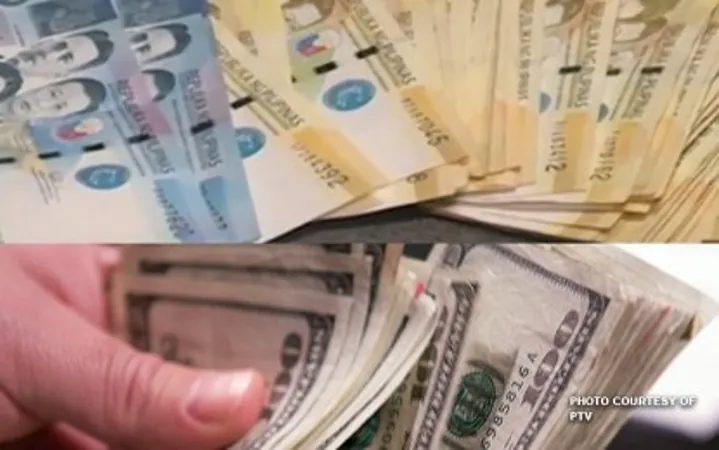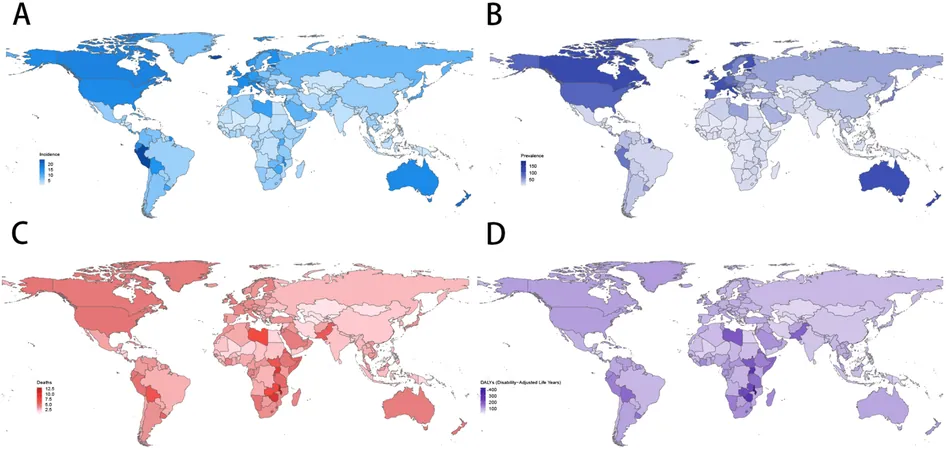
Is a Trade War on the Horizon? Peso May Plunge to 60 per Dollar, Warns BPI!
2025-03-26
Author: Sarah
Trade War Concerns and Peso Predictions
The Bank of the Philippine Islands (BPI) has raised alarm bells, predicting that the Philippine peso could plummet to an unsettling rate of P60.4 against the US dollar if President Trump's aggressive tariffs against Canada, China, and Mexico escalate into a major trade war. This forecast has economists on high alert as they contemplate the ripple effects of such a geopolitical crisis.
BPI chief economist Jun Neri, during a virtual media briefing, remarked, "We’re looking at the possibility of 60 because Trump's unpredictability could lead us there." This prediction is notably more pessimistic than his earlier estimate of P57.845 for 2024.
Neri elaborated that this foreign exchange outlook is mainly driven by the potential indirect impacts of Trump's tariffs on interest rates in the Philippines. Unlike Canada, China, and Mexico, which have substantial export dealings with the US, the Philippines relies less on direct trade with the American market, making it vulnerable to changes in economic sentiment driven by international tensions.
BSP's Slow Approach to Rate Cuts
Adding to the complexity, Marco Javier, a BPI strategist, noted that the Bangko Sentral ng Pilipinas (BSP) may take a slower approach in reducing its policy rate of 5.75%. This move would align with the Federal Reserve's strategy, as Chairman Jerome Powell stated that US officials are “not in a hurry” to cut rates, citing inflation concerns.
US Consumer Confidence and Inflation Concerns
Meanwhile, consumer confidence in the United States is at its lowest in four years, as revealed by data from the University of Michigan, which predicts inflation could hover around 5% for the next decade. This comes on the heels of the US Labor Department reporting a 0.2% inflation rise last month, contributing to a worrying annual growth of 2.8%. Both the US and the Philippines’ central banks have set a target inflation rate of 2%.
Monitoring Global Economic Developments
Expectations are building around April 2, when Trump’s proposed tariffs on Canada, Mexico, and China may come into effect, prompting BPI to closely monitor global economic developments. Assuming that the global economy remains stable, Neri suggested that the BSP might lower its policy rate twice this year, potentially easing it from 5.75% to 5.25%, while leaving options open to pause cuts in response to rising rice prices that could intensify inflationary pressures.
Potential Risks of Further Rate Cuts
Nevertheless, Neri warned that any further cuts beyond 4.75% next year could have dangerous implications for resource allocation and exacerbate inequality. "If growth slows too much, then additional cuts might be considered. However, rates at 4% or even 3% could lead to severe economic challenges," he stated.
Positive Economic Outlook with Lower Interest Rates
In a positive light, with lower interest rates, household consumption could see a boost, rising to approximately 5% this year, compared to 4.7% last year. This uptick could potentially fuel overall economic growth, projected to expand by 6.3%, up from 5.6%.
Conclusion and Future Implications
As events unfold, attention remains fixated on the looming trade war and the subsequent implications for the peso and the broader Philippine economy. Will the peso withstand the pressure, or will it buckle under the weight of international tensions? Stay tuned for more updates as the situation develops!




 Brasil (PT)
Brasil (PT)
 Canada (EN)
Canada (EN)
 Chile (ES)
Chile (ES)
 Česko (CS)
Česko (CS)
 대한민국 (KO)
대한민국 (KO)
 España (ES)
España (ES)
 France (FR)
France (FR)
 Hong Kong (EN)
Hong Kong (EN)
 Italia (IT)
Italia (IT)
 日本 (JA)
日本 (JA)
 Magyarország (HU)
Magyarország (HU)
 Norge (NO)
Norge (NO)
 Polska (PL)
Polska (PL)
 Schweiz (DE)
Schweiz (DE)
 Singapore (EN)
Singapore (EN)
 Sverige (SV)
Sverige (SV)
 Suomi (FI)
Suomi (FI)
 Türkiye (TR)
Türkiye (TR)
 الإمارات العربية المتحدة (AR)
الإمارات العربية المتحدة (AR)